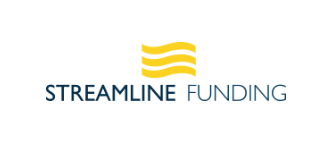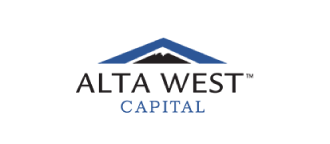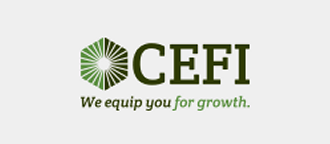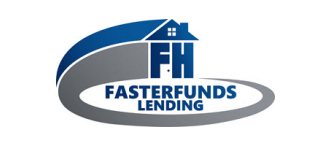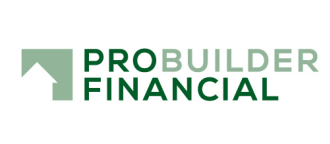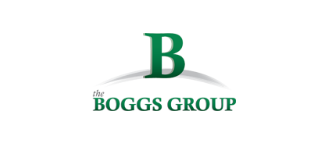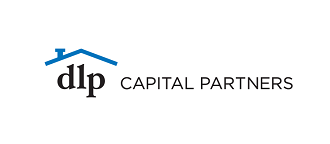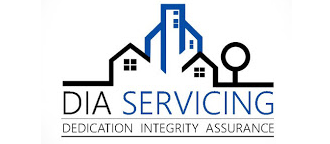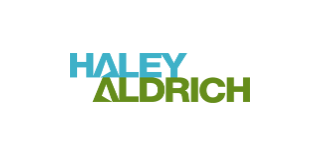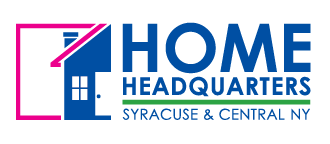10 Game-Changing Loan Servicing Tech Trends Reshaping the Industry
The loan servicing industry stands at an inflection point. Market projections show the global loan servicing sector growing from $3.91 billion in 2025 to reach $9.89 billion by 2033, at a CAGR of 12.3%. This explosive growth reflects more than simple market expansion. It signals a fundamental transformation in how institutions manage, service, and optimize their loan portfolios.
Traditional servicing methods built for yesterday's volumes and expectations increasingly fail to meet modern demands. Today's borrowers expect instant access, real-time updates, and seamless digital experiences. Regulators demand greater transparency and more sophisticated compliance tracking. Investors require detailed analytics and predictable returns. Meeting these converging demands requires embracing technological innovations that redefine what's possible in loan servicing.
The institutions thriving in this environment are those that recognize technology not as an operational expense but as a strategic differentiator. Below are ten transformative trends that are reshaping loan servicing from a back-office function into a competitive advantage.

1. AI-Powered Predictive Analytics Transform Risk Management
AI-driven analytics helped reduce loan defaults by 15% in North America in 2023, saving lenders millions of dollars in potential losses. This statistic only hints at the transformative power of artificial intelligence in modern loan servicing. Beyond simple pattern recognition, today's AI systems predict borrower behavior with unprecedented accuracy, identifying potential delinquencies weeks or months before they occur.
Modern servicing platforms leverage machine learning algorithms that continuously analyze payment patterns, economic indicators, and borrower interactions. These systems identify subtle signals that human analysts might miss: changes in payment timing, variations in communication patterns, or correlations with external economic data. The result is proactive intervention that prevents defaults rather than reactive collection efforts after problems emerge.
LOAN SERVICING SOFT integrates these capabilities directly into daily workflows. Loan officers receive automated alerts about at-risk accounts with specific recommended actions. The system learns from outcomes, continuously refining its predictive models to improve accuracy. This evolution from reactive to predictive servicing fundamentally changes the economics of portfolio management.
2. Embedded Finance Integration Creates Seamless Borrower Experiences
Embedded finance integrates financial services, such as payments, lending, insurance, or investments, into the platforms of non-financial businesses. This trend represents a paradigm shift in how borrowers interact with loan servicing. Rather than forcing customers to navigate separate platforms, embedded finance brings servicing capabilities directly into the environments where borrowers already operate.
Consider a small business owner managing inventory through their e-commerce platform. With embedded servicing integration, they can view loan balances, make payments, and even apply for additional credit without leaving their familiar business environment. This seamless integration reduces friction while increasing engagement and satisfaction.
Leading servicing platforms now offer robust APIs that enable this integration across diverse third-party systems. Payment processing, balance inquiries, and even modification requests flow seamlessly between platforms. The result is higher payment rates, reduced servicing costs, and stronger borrower relationships built on convenience rather than obligation.
3. Blockchain Technology Revolutionizes Transaction Security and Transparency
Blockchain technology adoption has risen, with over 25% of financial institutions implementing it for secure loan processing and fraud mitigation. This adoption reflects blockchain's unique ability to create immutable, transparent records of every transaction and modification throughout the loan lifecycle.
In practical terms, blockchain transforms several critical aspects of loan servicing. Payment histories become tamper-proof audit trails. Loan modifications create permanent records visible to all authorized parties. Document authenticity is cryptographically guaranteed. These capabilities eliminate disputes over payment histories and create unprecedented transparency for borrowers, servicers, and investors alike.
Advanced servicing platforms are beginning to incorporate blockchain elements into their core architecture. Smart contracts automate payment distribution according to predetermined rules. Distributed ledgers ensure perfect synchronization across multiple stakeholders. The technology that once seemed futuristic is becoming essential infrastructure for modern loan servicing.
4. Mobile-First Design Becomes Non-Negotiable
Mobile-friendly solutions are increasingly popular, with more than 75% of borrowers using apps to track loans, set payment reminders, and receive support. This shift reflects a fundamental change in borrower expectations. Mobile access is no longer a convenience feature but a baseline requirement for competitive loan servicing.
Modern borrowers manage their entire financial lives through smartphones. They expect to check loan balances as easily as checking social media, make payments with the same simplicity as ordering food delivery, and receive support through the same channels they use for everything else. Servicing platforms that fail to deliver these mobile experiences lose relevance with each passing day.
LOAN SERVICING SOFT's web portals exemplify this mobile-first approach. Responsive design ensures perfect functionality across all devices. Touch-optimized interfaces make complex tasks feel effortless. Push notifications keep borrowers informed without requiring active engagement. The result is dramatically higher borrower satisfaction and engagement rates.
5. Alternative Data Sources Enable More Inclusive and Accurate Decision-Making
Alternative data—like daily sales from a POS system or payment trends from invoicing tools—can reveal a business's true financial health. Traditional credit scoring methods often fail to capture the full picture of borrower capability, particularly for self-employed individuals, gig workers, or small businesses with irregular income patterns.
Modern servicing platforms increasingly incorporate alternative data streams to create more nuanced and accurate borrower profiles. Cash flow patterns from banking APIs provide real-time income verification. Utility payment histories demonstrate consistency beyond traditional credit reports. Business performance metrics from accounting software reveal operational health.
This expanded data perspective enables more intelligent servicing decisions. Payment plans can align with actual cash flow patterns rather than arbitrary monthly schedules. Modification options can reflect true capacity rather than outdated assessments. The result is better outcomes for both borrowers and lenders through decisions based on comprehensive, current information.
6. Automation Eliminates Manual Processes at Scale
By automating routine and repetitive tasks, lenders can streamline their operations and allocate resources more effectively. The scope of automation in modern loan servicing software extends far beyond simple payment processing. Today's platforms automate entire workflows from initial application through final payoff.
Document generation occurs automatically based on triggering events. Compliance checks run continuously without human intervention. Payment waterfalls execute according to complex rules without manual calculation. Even borrower communications deploy automatically based on account status and configured preferences. This comprehensive automation transforms servicing from a labor-intensive operation into a technology-driven process.
LOAN SERVICING SOFT exemplifies this automation revolution. Tasks that once required hours of manual effort are now complete in seconds. Staff focus shifts from repetitive processing to relationship management and complex problem-solving. The economic impact is profound: institutions report operational cost reductions exceeding 50% while simultaneously improving service quality.
Also read: 7 Reasons Why You Need a Loan Servicing Software
7. Cloud-Native Architecture Enables Unlimited Scalability
In 2023, over 65% of financial institutions transitioned to cloud-based loan servicing platforms, highlighting their demand for scalability and real-time access to borrower data. This mass migration to the cloud reflects more than a simple infrastructure upgrade. It represents a fundamental reimagining of how servicing platforms operate and scale.
Cloud-native platforms eliminate traditional constraints on growth. Processing capacity scales automatically with demand. Geographic limitations disappear as services deploy globally with consistent performance. Disaster recovery becomes automatic rather than aspirational. Most importantly, innovation accelerates as new features deploy instantly without complex installation procedures.
The advantages extend beyond technical capabilities. Cloud platforms enable true pay-as-you-grow economics, removing the capital barriers that once limited smaller servicers. Real-time collaboration becomes possible across distributed teams. Integration with other cloud services happens seamlessly. The cloud has become the essential foundation for modern loan servicing.
Additionally, modern platforms support seamless trust accounting features within cloud environments, ensuring that borrower funds are tracked and managed transparently and securely, further building borrower confidence and regulatory compliance.
8. Hyper-Personalization Through Advanced Analytics
Digital lending platforms increasingly use advanced technologies to deliver personalized loan recommendations. This personalization extends throughout the servicing lifecycle, creating unique experiences tailored to each borrower's preferences, behavior, and circumstances.
Modern platforms track and analyze every borrower interaction to build comprehensive preference profiles. Communication preferences emerge from response patterns. Payment reminders optimize timing based on individual behavior. Support interactions reference complete history and context. The result is a service that feels personally crafted rather than institutionally imposed.
This hyper-personalization drives measurable improvements in borrower satisfaction and portfolio performance. Payment rates increase when reminders arrive at optimal times through preferred channels. Support resolution accelerates when agents have complete context. Retention improves when borrowers feel understood rather than processed. Personalization has become a competitive necessity in modern loan servicing.
9. Integrated Ecosystem Platforms Replace Point Solutions
The era of disconnected servicing tools is ending. Modern institutions demand unified platforms that seamlessly integrate origination, servicing, collections, and investor reporting. This integration eliminates data silos, reduces operational complexity, and enables comprehensive portfolio insights impossible with fragmented systems.
LOAN SERVICING SOFT exemplifies this ecosystem approach. A single platform handles everything from initial application through final payoff. Data flows seamlessly between functions without manual intervention. Staff work from unified interfaces rather than juggling multiple systems. The operational efficiency gains are substantial, but the strategic advantages are even greater.
Integrated platforms enable holistic portfolio management based on complete data visibility. Patterns invisible in isolated systems become clear when all data resides in one place. Decision-making improves when based on comprehensive information rather than partial views. The institutions winning in today's market are those that have abandoned point solutions for integrated ecosystems.
These platforms increasingly incorporate advanced reporting solutions, offering lenders real-time, customizable insights that help identify trends, monitor compliance, and support strategic decision-making.
10. Sustainability and Green Lending Drive New Servicing Requirements
Lenders offering tailored green finance products can position themselves as leaders in a rapidly evolving market. Environmental consciousness is reshaping lending practices and creating new servicing requirements. Green loans often feature unique structures, specialized reporting requirements, and impact tracking obligations that traditional servicing platforms struggle to accommodate.
Modern servicing technology must track not just financial metrics but environmental impact indicators. Borrowers expect transparency about how their loans contribute to sustainability goals. Investors demand detailed reporting on green portfolio performance. Regulators increasingly require documentation of environmental compliance. These requirements transform servicing from purely financial management to comprehensive impact tracking.
Forward-thinking platforms are building these capabilities into their core architecture. Carbon offset calculations integrate with payment processing. Sustainability metrics appear alongside financial performance indicators. Green loan certifications are maintained automatically based on compliance tracking. The institutions that embrace these capabilities today position themselves for tomorrow's sustainable lending landscape.
The Convergence of Trends Creates Exponential Impact
These ten trends don't operate in isolation. Their convergence creates exponential improvements in servicing capability and efficiency. AI-powered analytics work better with alternative data sources. Mobile platforms benefit from cloud scalability. Automation enables hyper-personalization at scale. Each trend reinforces and amplifies the others.
The loan management software market size is expected to see exponential growth in the next few years. It will grow to $21.62 billion in 2028 at a compound annual growth rate (CAGR) of 20.6%. This growth reflects the transformative power of these converging trends. Institutions that embrace comprehensive modernization capture benefits far exceeding the sum of individual improvements.
The competitive implications are stark. Institutions clinging to legacy approaches face mounting disadvantages as technology-enabled competitors offer superior service at lower cost. The gap between leaders and laggards widens with each passing month. The time for incremental improvement has passed; transformation is now the minimum requirement for competitive survival.
Implementing Tomorrow's Technology Today
For institutions evaluating their servicing technology strategy, the path forward is clear but requires decisive action. The trends outlined above aren't distant possibilities but current realities being implemented by market leaders. The question isn't whether to adopt these technologies but how quickly you can implement comprehensive solutions that capture their full potential.
LOAN SERVICING SOFT stands at the forefront of this transformation, incorporating these game-changing trends into a unified platform that delivers immediate operational benefits while positioning institutions for future success. From AI-powered analytics to blockchain security, from mobile-first design to green lending capabilities, the platform embodies the future of loan servicing available today.
The institutions thriving five years from now will be those that recognized these trends early and acted decisively. They'll operate with dramatically lower costs, deliver superior borrower experiences, and capture opportunities invisible to their traditional competitors. Most importantly, they'll have built the technological foundation necessary to adapt to whatever changes the future brings.
Ready to embrace the future of loan servicing? Discover how LOAN SERVICING SOFT can position your institution at the forefront of these transformative trends. The technology exists. The benefits are proven. The only question is whether you'll lead the transformation or follow it. Reach out to us today, and we’ll email you a quote!





